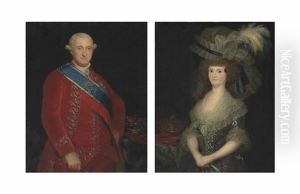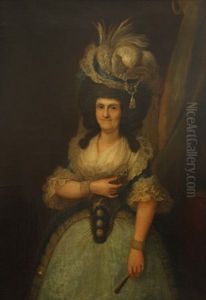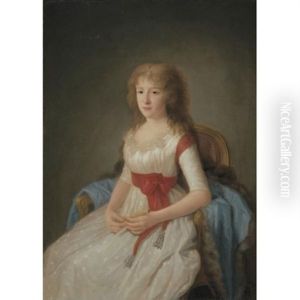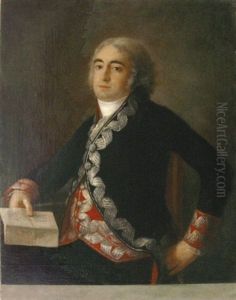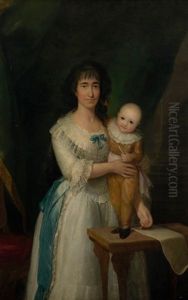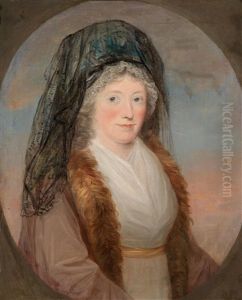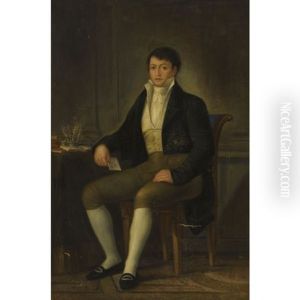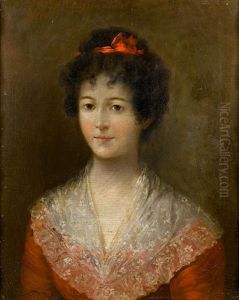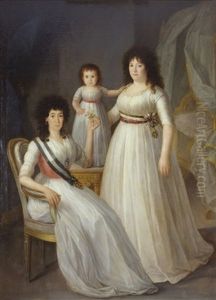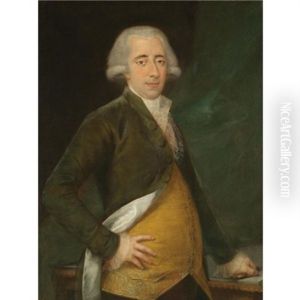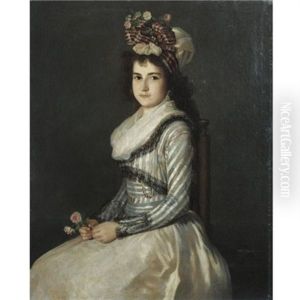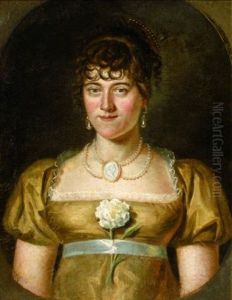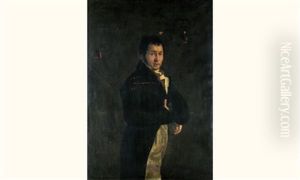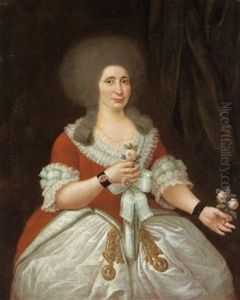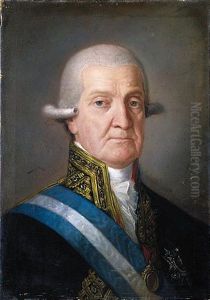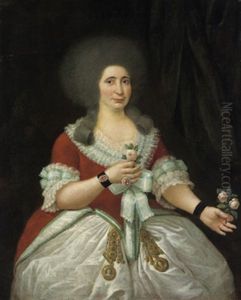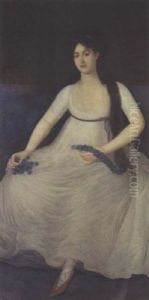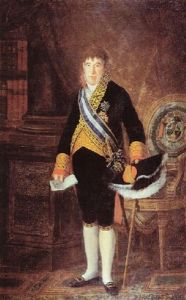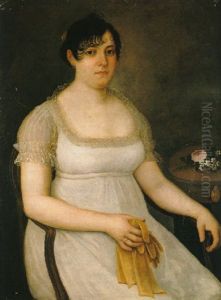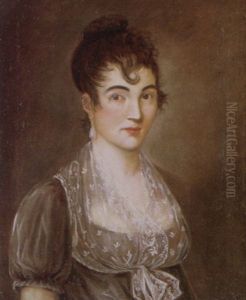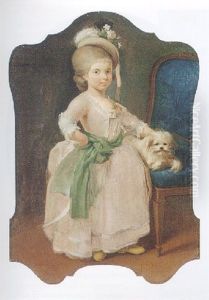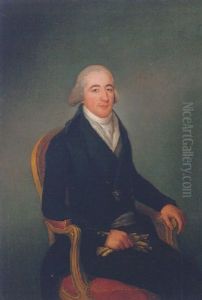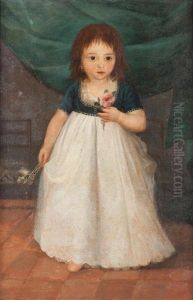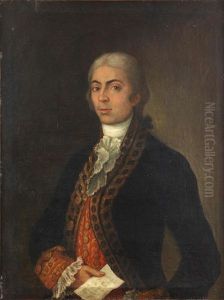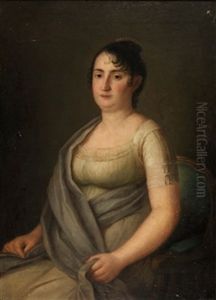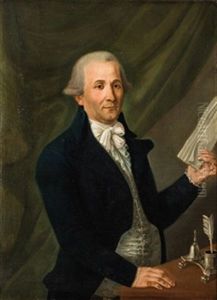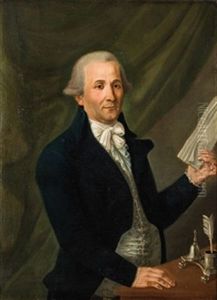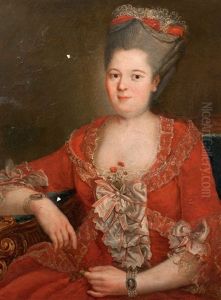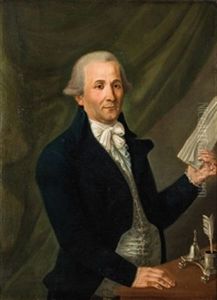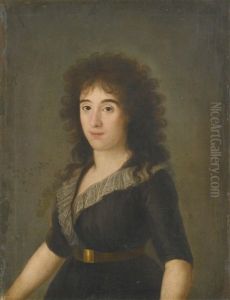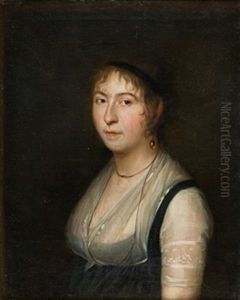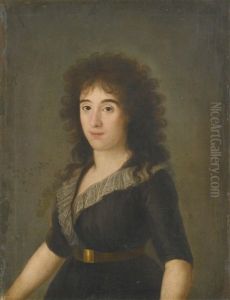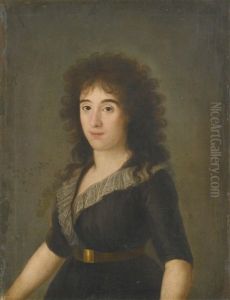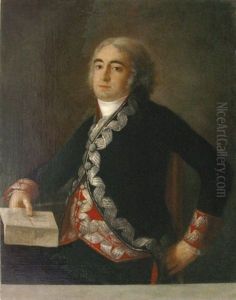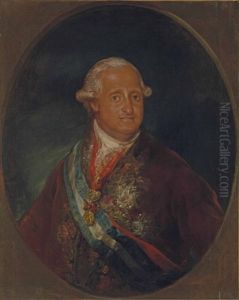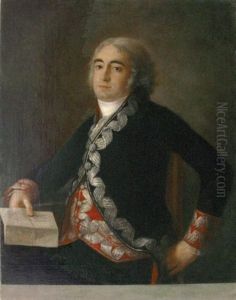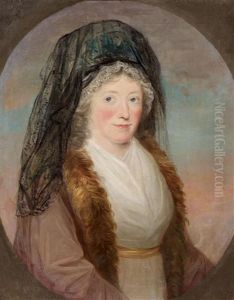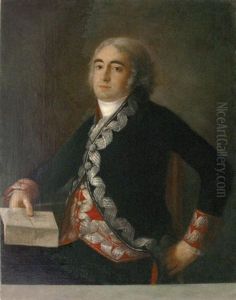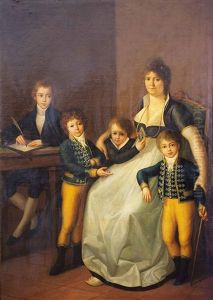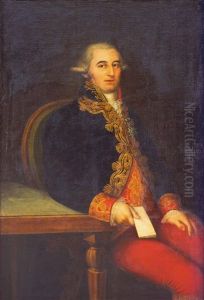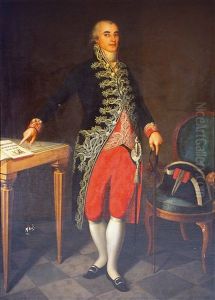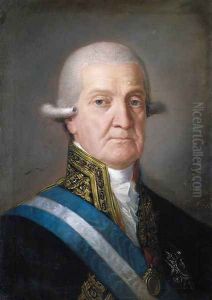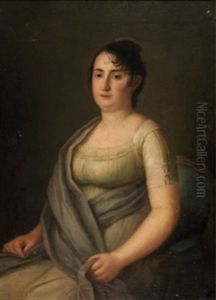Agustin Esteve Y Marques Paintings
Agustín Esteve y Marqués was a notable Spanish painter, born in 1753 in Valencia, Spain, and died in 1830 in Madrid. Esteve was a distinguished portraitist of the late 18th and early 19th centuries, whose artistry was deeply influenced by the Spanish Enlightenment. He was a contemporary of Francisco de Goya, with whom he shared artistic space, though Esteve developed a unique style that focused on the elegance and detailed depiction of his subjects, distinguishing him from his peers.
Esteve received his early training from his father, Agustín Esteve y Tudó, who was also a painter. He further honed his skills in Madrid, where he was influenced by the works of Anton Raphael Mengs and the Neoclassical style, which was predominant in the Spanish court at the time. Esteve's career flourished under the patronage of the Spanish nobility, for whom he executed numerous portraits, capturing the intricate details of their attire and the subtleties of their expressions with a remarkable finesse.
Notably, Esteve's work was characterized by his meticulous attention to the textures of fabrics and the grace of his sitters, attributes that made his portraits highly sought after. His paintings were celebrated for their realism and the lifelike quality of the figures he depicted. Esteve had the ability to convey the personality and status of his subjects, making each portrait a detailed study of the individual’s character.
Throughout his career, Esteve was influenced by the shifting political and cultural landscapes of Spain, yet he remained committed to his artistic vision, adapting his style to meet the evolving tastes of his patrons. His contribution to Spanish art was significant, as he bridged the gap between the Rococo and Neoclassical styles, incorporating elements of both into his work. Despite the overshadowing fame of Goya, Esteve's legacy endures through his portraits, which continue to be admired for their elegance and precision.
Esteve’s works are preserved in various museums and collections, both in Spain and internationally, serving as enduring testaments to his skill and artistic legacy. His portraits not only offer insight into the fashion and culture of his time but also reflect the nuanced development of Spanish portraiture at the turn of the 19th century. Agustín Esteve y Marqués remains a significant figure in the history of Spanish art, celebrated for his contributions to the portrait genre and his ability to capture the essence of the Enlightenment era through his meticulous and refined approach to painting.
